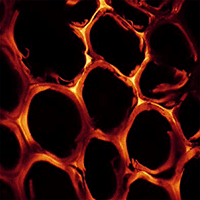
Pre-treatment with sodium silicate, sodium hydroxide, ionic liquids or methacrylate resin to reduce the set-recovery and increase the hardness of surface-densified Scots pine
Benedikt Neyses (1) , Lauri Rautkari (2), Akio Yamamoto (2), Dick Sandberg (1)
iForest - Biogeosciences and Forestry, Volume 10, Issue 5, Pages 857-864 (2017)
doi: https://doi.org/10.3832/ifor2385-010
Published: Oct 26, 2017 - Copyright © 2017 SISEF
Research Articles
Collection/Special Issue: COST action FP1407
Understanding wood modification through an integrated scientific and environmental impact approach
Guest Editors: Giacomo Goli, Andreja Kutnar, Dennis Jones, Dick Sandberg
Abstract
The hardness of the outer regions of solid wood can be improved by surface densification, and this opens up new fields of application for low-density species. So far, surface densification relies on time- and energy-consuming batch processes, and this means that the potential advantages over more expensive hardwood species or non-renewable materials are reduced. Using fossil-based plastics or applying wood densification processes with a high energy consumption has adverse effects on the environment. In a previous study, it was shown that the surface of wood can be densified by a continuous high-speed process, adopting a roller pressing approach. The desired density profiles could be obtained at process speeds of up to 80 m min-1, but an equally simple and fast method to eliminate the moisture-induced set-recovery of the densified wood cells is still required. For this reason, the goal of the present study was to evaluate the effect on the set-recovery and hardness of surface-densified Scots pine after a fast pre-treatment with solutions of sodium silicate, sodium hydroxide, methacrylate resin, and ionic liquids. The Scots pine specimens were pre-treated by applying the chemical treatment and impregnation agents to the wood surface with a paper towel, before the specimens were densified. For each type of treatment, 15 specimens were densified in a hot press. The set-recovery was measured after two wet-dry cycles, and 30 Brinell hardness measurements were carried out on each group of specimens. In general, the effect of the treatments on the set-recovery was rather low. Ionic liquid solutions appear to work as a strong plasticiser and the treatment led to a reduction in set-recovery by 25%. The treatments with sodium silicate, ionic liquids and methacrylate resin led to a greater hardness than in untreated and densified specimens. Further experiments are needed to improve the depth of penetration of the treatment solutions into the wood surface, as this was identified as one of the main causes of the rather weak effects.
Keywords
Water Glass, Compression, Wood Modification, Surface Treatment, Ionic Liquid, Sodium Hydroxide, Methacrylate Resin, Sodium Silicate
Authors’ Info
Authors’ address
Dick Sandberg
Luleå University of Technology, Wood Science and Engineering,Forskargatan 1, 93187 Skellefteå (Sweden)
Akio Yamamoto
Aalto University, Department of Bioproducts and Biosystems,Vuorimiehentie 1, 02150 Espoo (Finland)
Corresponding author
Paper Info
Citation
Neyses B, Rautkari L, Yamamoto A, Sandberg D (2017). Pre-treatment with sodium silicate, sodium hydroxide, ionic liquids or methacrylate resin to reduce the set-recovery and increase the hardness of surface-densified Scots pine. iForest 10: 857-864. - doi: 10.3832/ifor2385-010
Academic Editor
Giacomo Goli
Paper history
Received: Feb 01, 2017
Accepted: Jul 04, 2017
First online: Oct 26, 2017
Publication Date: Oct 31, 2017
Publication Time: 3.80 months
Copyright Information
© SISEF - The Italian Society of Silviculture and Forest Ecology 2017
Open Access
This article is distributed under the terms of the Creative Commons Attribution-Non Commercial 4.0 International (https://creativecommons.org/licenses/by-nc/4.0/), which permits unrestricted use, distribution, and reproduction in any medium, provided you give appropriate credit to the original author(s) and the source, provide a link to the Creative Commons license, and indicate if changes were made.
Web Metrics
Breakdown by View Type
Article Usage
Total Article Views: 53919
(from publication date up to now)
Breakdown by View Type
HTML Page Views: 44046
Abstract Page Views: 3756
PDF Downloads: 4850
Citation/Reference Downloads: 100
XML Downloads: 1167
Web Metrics
Days since publication: 2979
Overall contacts: 53919
Avg. contacts per week: 126.70
Citation Metrics
Article Citations
Article citations are based on data periodically collected from the Clarivate Web of Science web site
(last update: Mar 2025)
Total number of cites (since 2017): 15
Average cites per year: 1.67
Publication Metrics
by Dimensions ©
Articles citing this article
List of the papers citing this article based on CrossRef Cited-by.
References
How overdrying wood reduces its bonding to phenol-formaldehyde adhesives - a critical-review of the literature. Part 1. Physical responses. Wood and Fiber Science 22: 441-459.
Gscholar
Verfahren zur Herstellung veredelten Holzes [A process for producing improved wood]. Holzveredelung G.m.b.H. in Berlin, Reichspatentamt, Patentschrift nr. 357385, Berlin, Germany.
Gscholar
Principles of wood science and technology. Vol. II: wood based materials. Springer-Verlag, Berlin/Heidelberg, Germany, pp. 141-148.
Gscholar
Densification of wood: the influence of hygrothermal treatment on compression of beech perpendicular to the grain. PhD Dissertation, Technical University of Denmark, Copenhagen, Denmark, pp. 22.
Gscholar
Thermo-hydro-mechanical post-treatment of densified wood. In: Proceedings of “5th Pacific Rim Bio-Based Composites Symposium”. Canberra (Australia) 10-13 Dec 2000, pp. 439-447.
Gscholar
Investigations of hardness measurements on wood based materials using a new universal measurement system. In: Proceedings of the Symposium “Wood Machining. Properties of Wood and Wood Composites Related to Wood Machining” (Stanzl-Tschegg SE, Reiterer A eds). Vienna (Austria) 27-29 Sept 2000, pp. 51-61.
Online | Gscholar
Heat-stabilized compressed wood. Staypak. Mechanical Engineering 67: 25-31.
Gscholar
Surface densification of wood. Forest Products Journal 18 (9): 104-107.
Gscholar

















